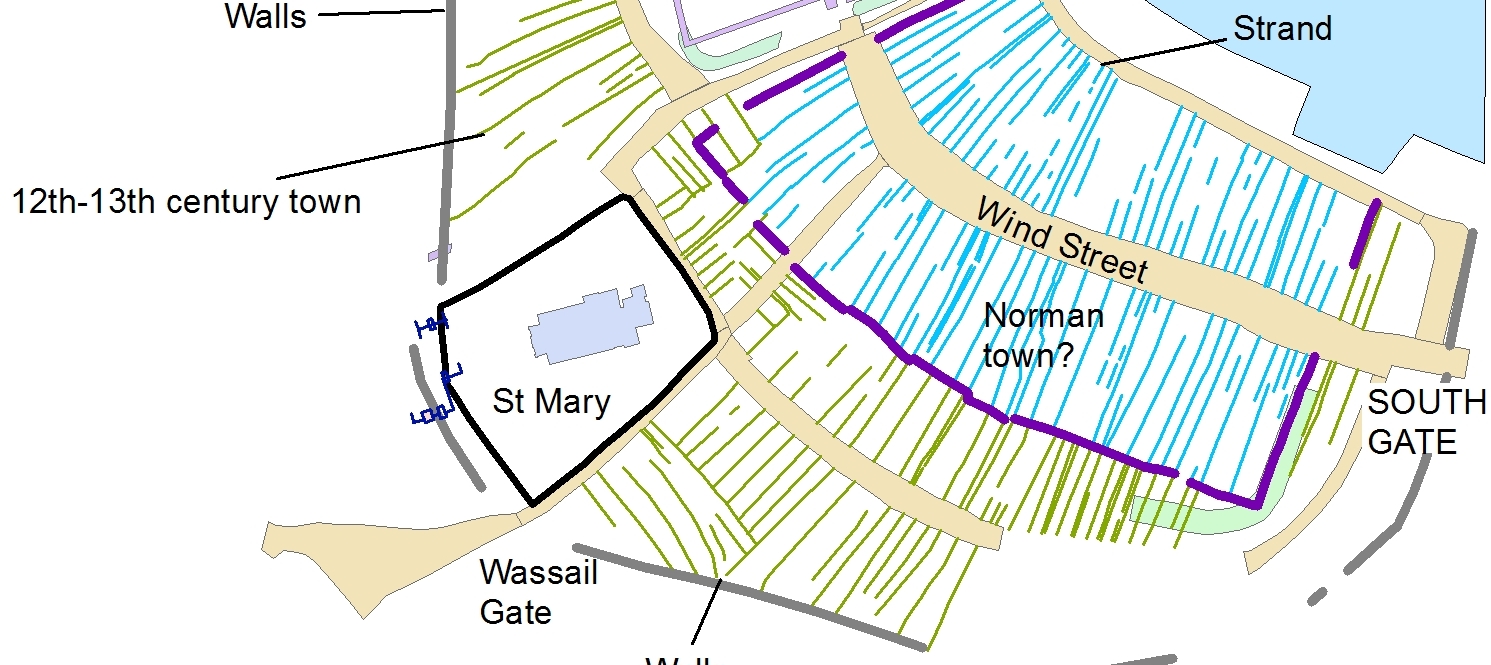Blog
A new marketplace for medieval Swansea?
One of the discoveries which has really got me excited this week is a great example of how textual analysis and historic mapping can come together to provide a new insight into a medieval landscape. In this case, it started with the testimony of our medieval witness John ap Hywel, a labourer, who tells us that he watched the hanging with a large group of other people in a 'platea' near St Mary's church.
Robert Bartlett refers to this place as the 'square', but without any further indication as to exactly where in Swansea it might be. Michael Richter comments on John ap Hywel's deposition, noting that 'Auf dem Platz von Swansea innerhalb der Stadmauer hatten sich etwa 100 Menschen versammelt' ('In Swansea square [Platz], inside the town wall, around 100 people had gathered'). But there is no obvious 'square' inside the town walls. In his work De Laude Cestrie, Lucian uses the Latin term platea to refer to the marketplace in Chester (though he also uses forum). Could that be what we're looking for? But where is this in medieval Swansea?
In their mapping work, Gareth and Keith have found a triangular-shaped area just outside the town wall by the Wassail Gate.

This triangular or funnel-shaped form is characteristic of marketplaces in medieval towns - as is its location leading to a gate and near a church. From John ap Hywel's description, it seems likely that this is where he was standing. Outside the city walls, he would have the view up to the gallows on gibbet hill which he speaks about. The platea would be slightly raised above the boggy ground around it, where a stream runs along the town walls. If John ap Hywel had been standing inside the walls, it's unlikely he would have been able to see over the built structures of Swansea to the gallows beyond.
There are other interesting questions and possibilities here, too. We know that medieval Swansea did have a market at the top of Wind Street, where a market house survived until the 19th century. But it wasn't unusual for a medieval town to have more than one market, each potentially serving different communities. Might the market at the top of Wind Street (in the heart of the oldest part of the Anglo-Norman town) have primarily served the Anglo-Norman burgesses of Swansea? The area just outside Wassail Gate was at the start of a road which connected up with the main road to the Gower - a much more Welsh area. Could a market just outside the Wassail Gate have served a particular function for the Welsh community in and around Swansea? Is that why John ap Hywel and so many other local people chose to gather and watch the hanging there?
Share on Twitter Share on Facebook



